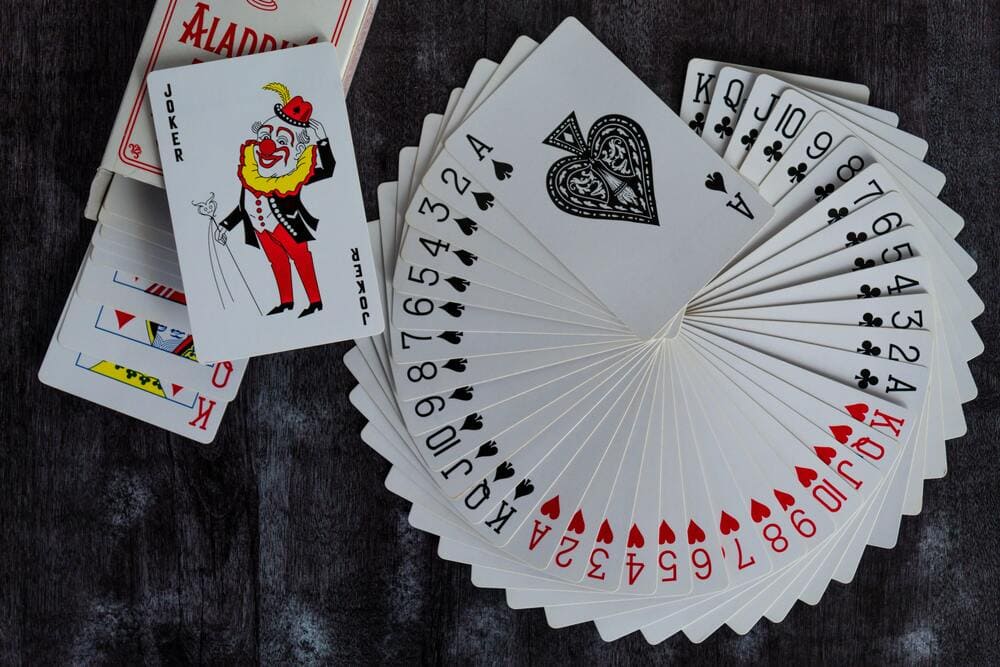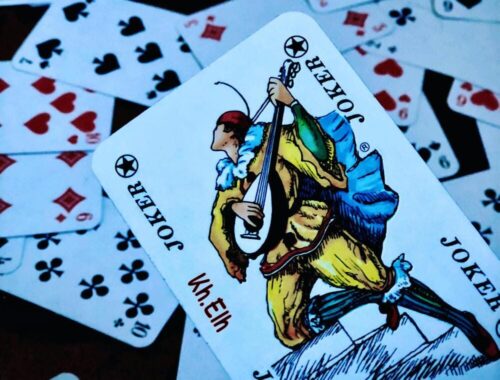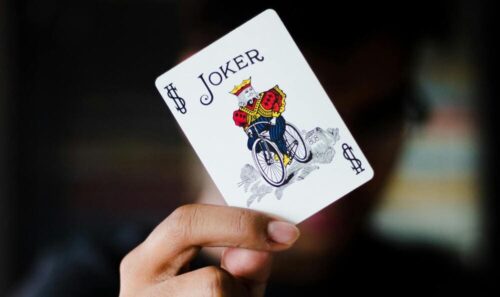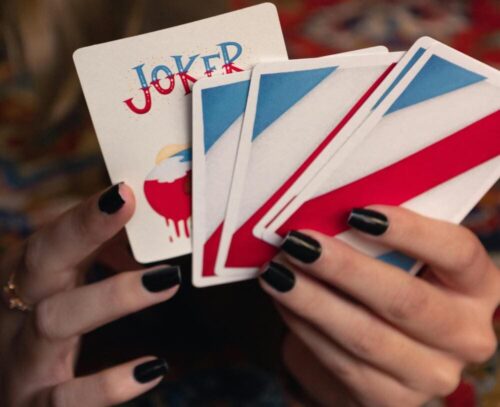Playing cards have gone through tons of design changes over the years, and there’s a lot brands can learn from that if they want to get noticed right away and create some strong feelings. This article presents you with some fun logo ideas inspried by a simple deck of cards.
In your hands, you hold a piece of history that predates smartphones, billboards and printed books. A simple deck of playing cards carries visual wisdom that has shaped logos for luxury fashion houses, tech startups and sports teams. Because they solve a problem that has endured empires and cultural shifts, these symbols have survived throughout history. Communicating complex ideas universally and quickly.
Mega Joker Casino Leverages Historical Symbolism
The Mega Joker Casino logo may be a simple nod to gambling culture, but the design choices go deeper. This makes the Joker’s crown tilt at the same angle as in 18th-century French tarot decks, where kings represented unquestioned authority. On the joker’s collar, diamond patterns recall 19th-century German playing cards that represented wealth and chance. This clever mixing of historical references results in a logo that is both new and familiar, just like Google’s logo updates this year.
In fact, the joker card itself is rooted in Renaissance Italy, where tarot decks featured “Il Matto” (The Fool), a symbol of risk and unpredictability. By tapping into this common visual memory, Mega Joker can avoid long explanations. Symbols in our brains convey excitement and opportunity.
From Ancient China to Contemporary Branding
Its journey began in 9th-century China, where paper “money cards” doubled as gambling tools and currency prototypes. In these early designs, coins and cash strings were used as symbols of prosperity – motifs still used in Asian branding today. As Persian traders took the cards westwards, Egyptian Mamluk warriors turned them into military status symbols in the form of suits, swords and polo sticks.
The four suits that we know today were standardised by French card makers in 1480 through deliberate cultural curation:
- They evolved from religious chalices.
- Spades were inspired by German leaf symbols.
- Clubs evolved from acorn motifs.
- Diamonds mirrored coin shapes
This 15th-century rebranding effort sought to create visuals that transcended language barriers – a problem many modern global brands face.
Unexpected Industries are Using Card Logic
While card imagery is naturally associated with casinos, these sectors demonstrate the themes’ versatility:
Luxury Fashion
In its 2019 Metiers d’Art collection, Chanel offered card suit jackets for more than USD 12,000. The connection goes beyond aesthetics. In her Paris apartment, Coco Chanel reportedly held high-stakes poker games.
Cybersecurity
Norton’s shield-shaped logo sports sharp angles similar to the spade suit’s blade-like silhouette. The Journal of Consumer Psychology found that angular shapes evoke subconscious associations with strength and protection.
Specialty Coffee
No text is needed for the diamond-shaped emblem. Its association with value goes back to the 16th century in Germany, where decks of cards were displayed to show material wealth.
Sports Franchises
For the Vegas Golden Knights hockey team, medieval armor is combined with metallic textures. They use crossed swords as the emblems of their ancient playing cards, which have been adapted for modern audiences.
The Neuroscience of Iconic Shapes
MIT researchers found that visual symbols are processed 60,000 times faster than text. The three primal neural responses that card suits exploit are the following:
1. Curved Comfort
The round edges of the heart activate the fusiform face area of the brain – the same region that lights up when it sees a smiling human face. This helps explain why apps like Heartline use heart icons to ease medical anxiety.
2. Angular Alertness
The sharp points of a spade trigger mild threat responses – ideal for security brands. The U.S. Army’s 10th Mountain Division sports a spade logo to represent strategic precision.
3. Faceted Value
The way diamond shapes reflect light makes them instantly associated with luxury. Tiffany & Co. amplifies this effect with its blue packaging and diamond-centric branding.
Design Strategies Borrowed From History
Designers are taken from history, and strategies are borrowed from history. The lessons learned from five centuries of card design can be applied to modern logo design.
Simplify your logo relentlessly. Bicycle Playing Cards’ 1885 redesign stripped suits to their essentials for mass production. That principle was applied by Harley-Davidson when they turned complicated club symbols into a shield logo.
Use color with intent. While red dominates casino branding, Dutch Bros uses soft pink diamonds to suggest approachable luxury. For the World Poker Tour, gold accents mirror the high-stakes nature of poker chips.
It’s easy to miss meaning in plain sight. Earlier versions of FedEx’s famous hidden arrow have been modeled after Bicycle Cards’ subtle ace marks that teach audiences to look for hidden details.
Worldwide Adaptations of Card Motifs
Traditional Western symbols are reinterpreted in Asian markets:
- The cherry blossom logos for Kirin Brewery are inspired by Japanese Hanafuda (flower cards).
- For cross-cultural recognition, Chinese brands combine diamond suits with ancient coin motifs.
- In Alibaba’s “Diamond Member” tier, faceted icons for Eastern and Western luxury are used.
Brands mixing local and universal symbols drive an increase in international engagement, according to a 2022 McKinsey report.
Digital Age Reinventions
Card motifs work well on screens because they adapt to new formats:
- Many dating apps animate heart icons with pulses.
- For value-creation metaphors, crypto platforms use spinning diamond loaders.
- In response to remote work surges, video tools have adopted playing card layouts.
As a legacy of card design, Adobe’s 2023 design report says that 61% of successful app icons use symbolic shapes instead of text.
Timeless Advantage of Visual Inheritance
When 55% of all website visits are under 15 seconds (Google Analytics data), card symbols offer brands a way to jump right into our collective visual memory. If a coffee shop uses a club symbol, it taps into growth associations that are connected to stock markets. When a cybersecurity firm uses spades as a symbol, it uses medieval heraldry as a symbol of authority.
These are human symbols that endure because they are old and because they are human. Their survival was based not on nostalgia but on constant reinvention. It’s not that modern designers should copy the past, but rather reinterpret it for audiences who have not seen a physical deck.



